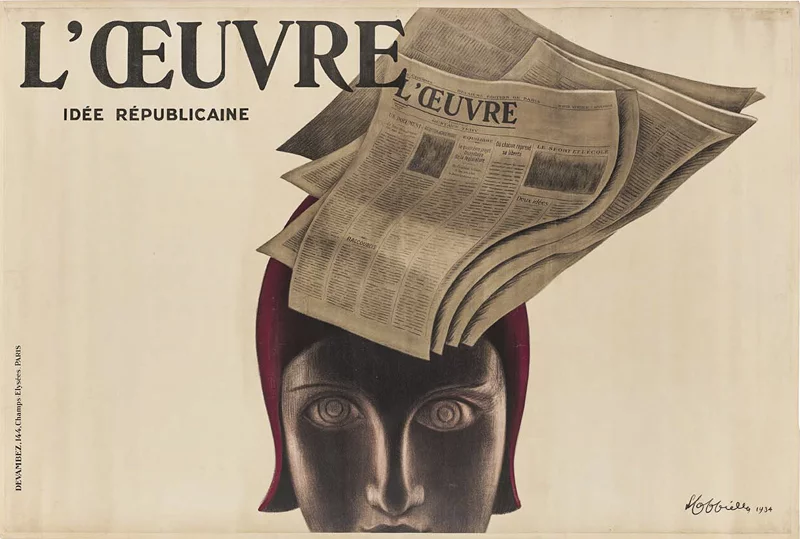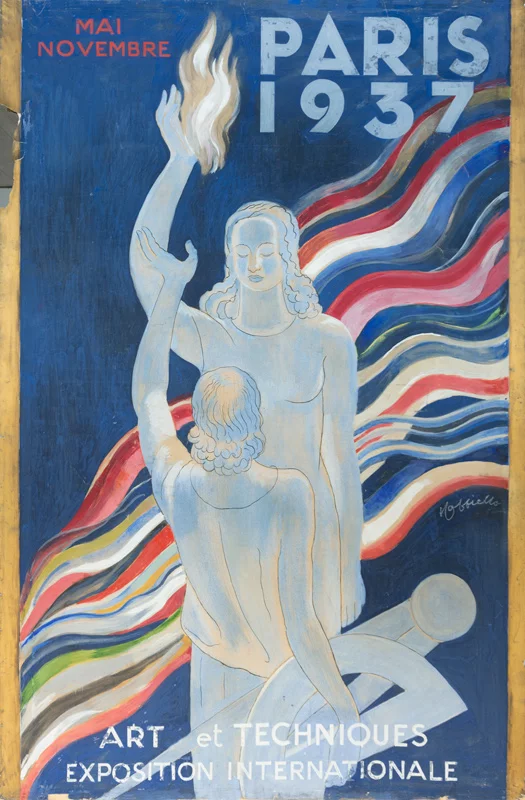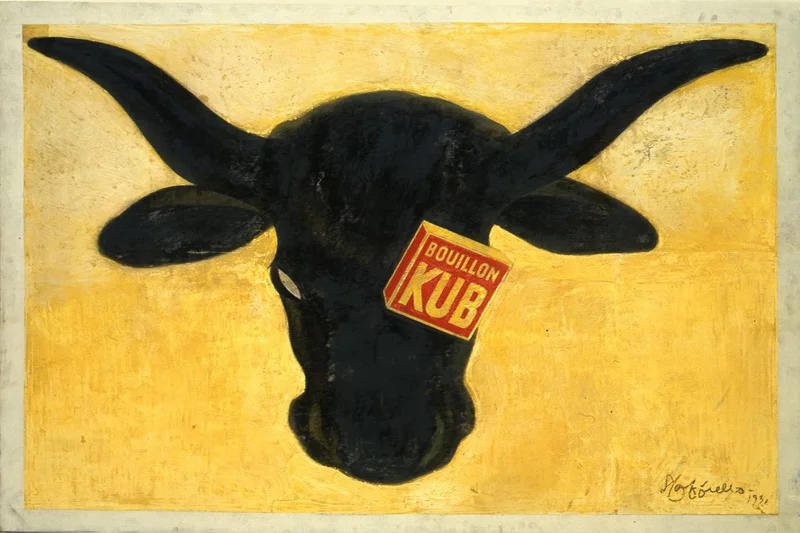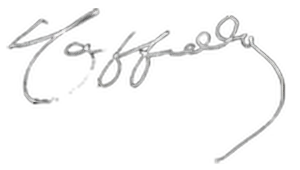Cappiello’s posters during the 1930s
1930 – 1940
The Economic Context
Due to the 1929 American crisis, the French economy began to decline from 1930, leading to a reduction in advertising budgets. From 1934 onward, Devambez could no longer meet its financial obligations, and Cappiello left for Damour-Publicité, where he remained until his death in 1942.
Stylistic Evolution of Cappiello’s Posters During the 1930s
During the 1920s and 1930s, numerous artistic movements developed, such as Art Deco, Fauvism, and Cubism. This influence became particularly visible in Cappiello’s posters from 1930 to 1940. They became more geometric and symbolic (The Work – 1933, Paris 1937).

The work
1933

Paris 1937
1937
Adapting to New Trends
At the same time, advancements in photography allowed for large-scale images, leading industrialists to demand the most truthful representation of objects possible. Unable to resist this movement, Cappiello’s posters during the 1930s thus became much more static. However, in return, they grew more suggestive. This is the case with Bouillon Kub, which associates the small packet of perfectly depicted broth concentrate with a bull’s head, or Mossant, which greets us with a cascade of hats.
Artistic Diversification
During this period of the 1930s, Cappiello’s poster production declined. It was supplemented by the creation of very different works, such as the fresco for the Dupont restaurant in Barbès depicting the Montmartre festivities or the decorative panel titled “La Force Motrice” for the Advertising Pavilion at the 1937 World’s Fair.


